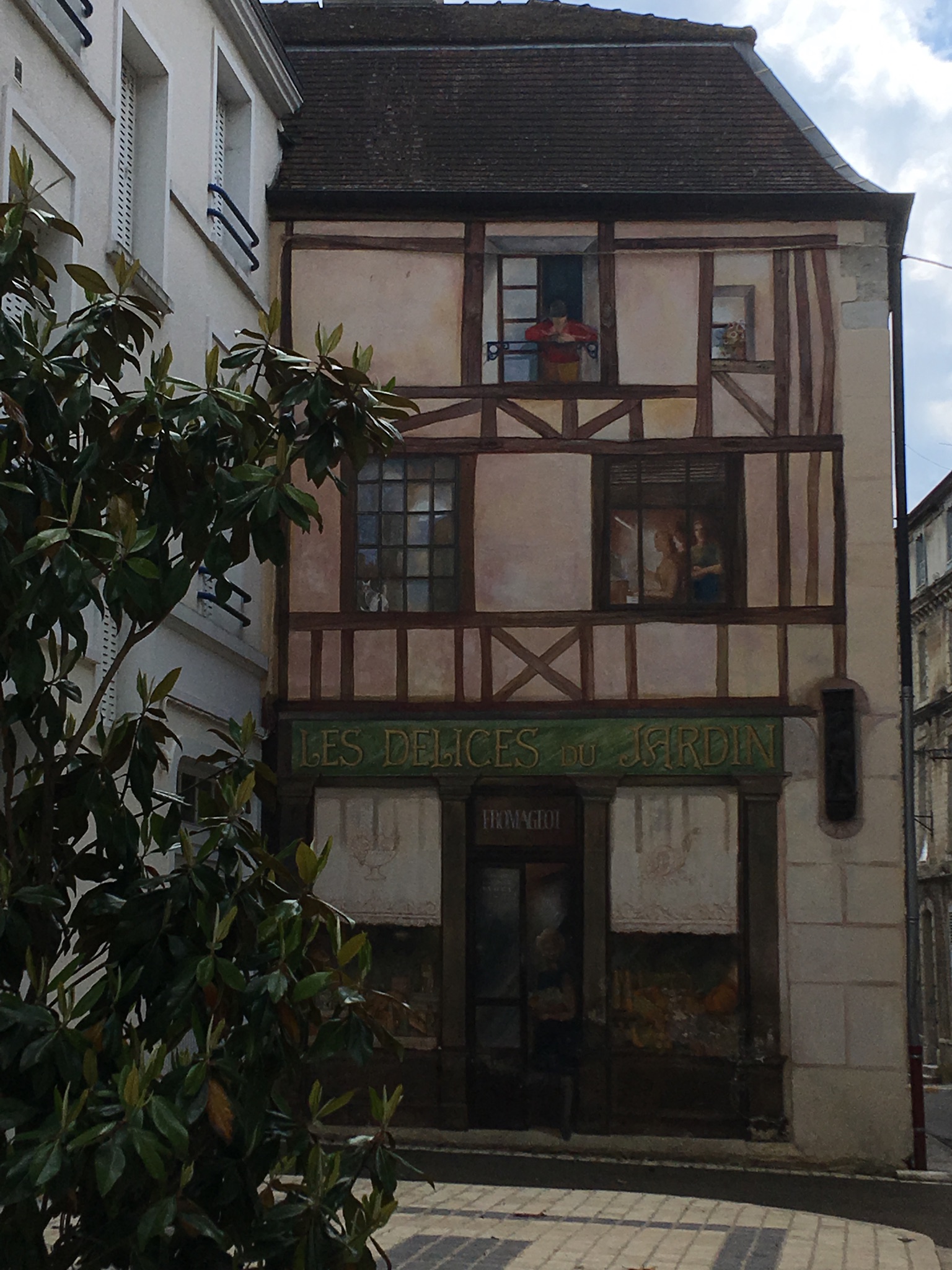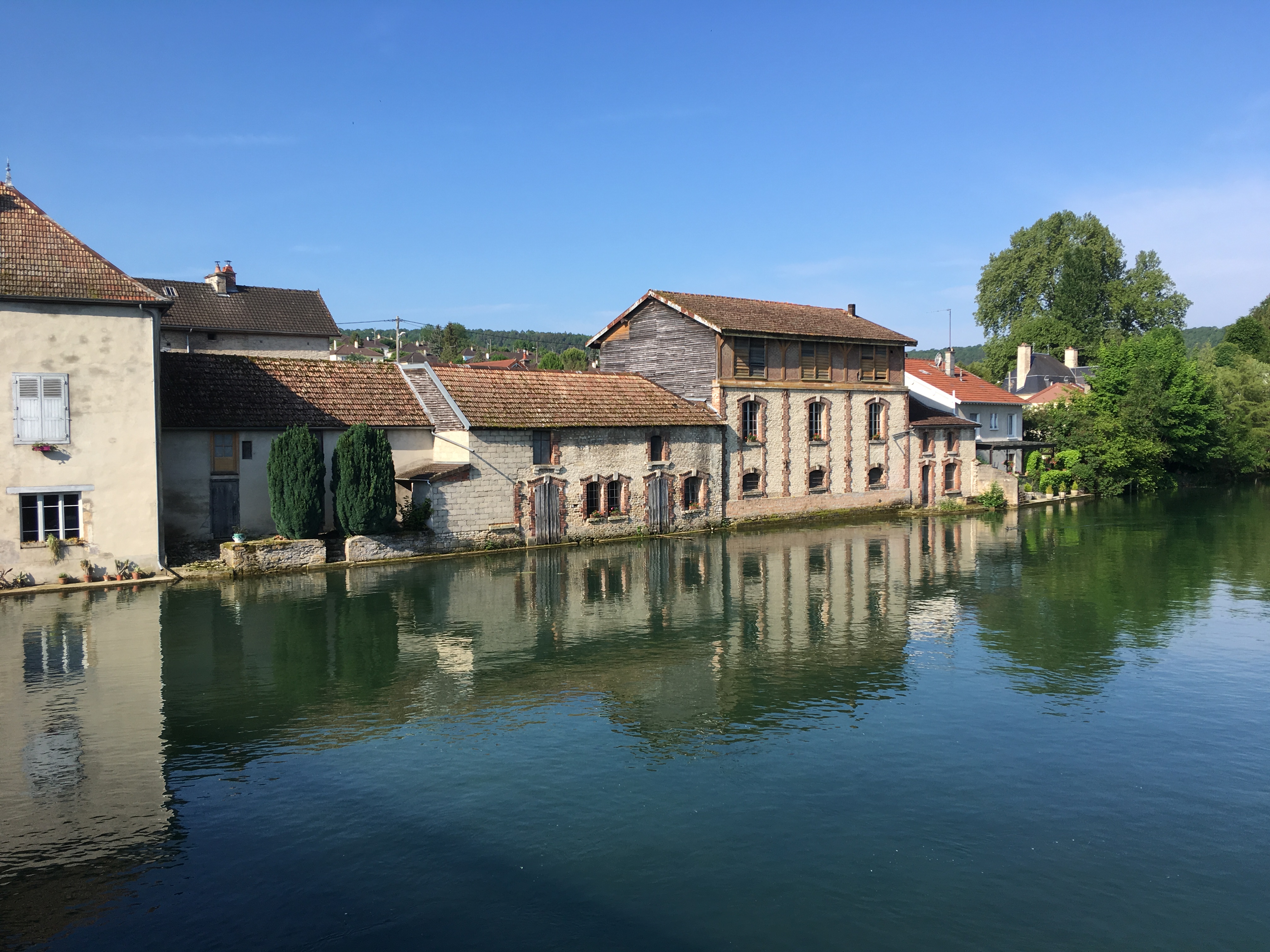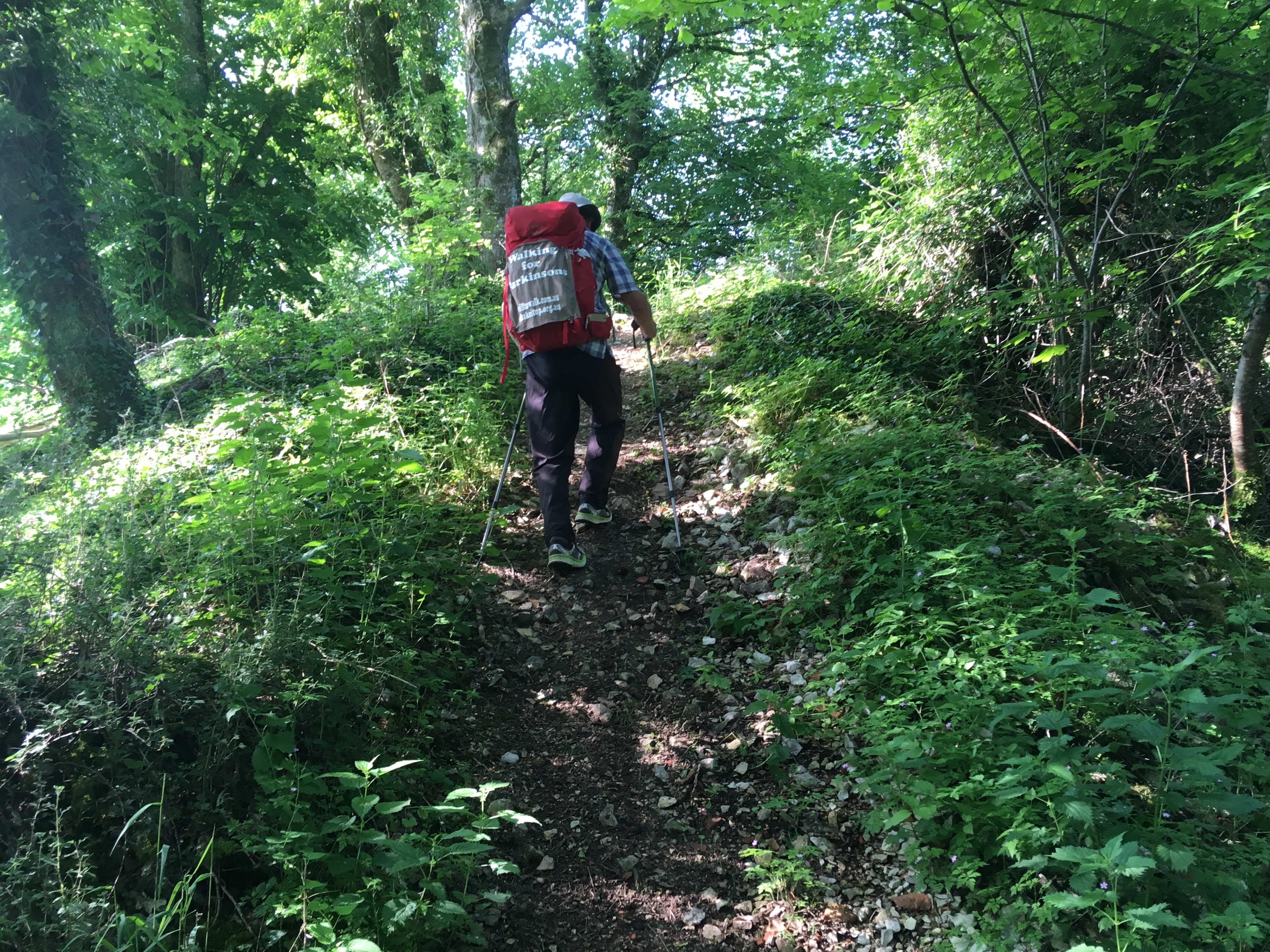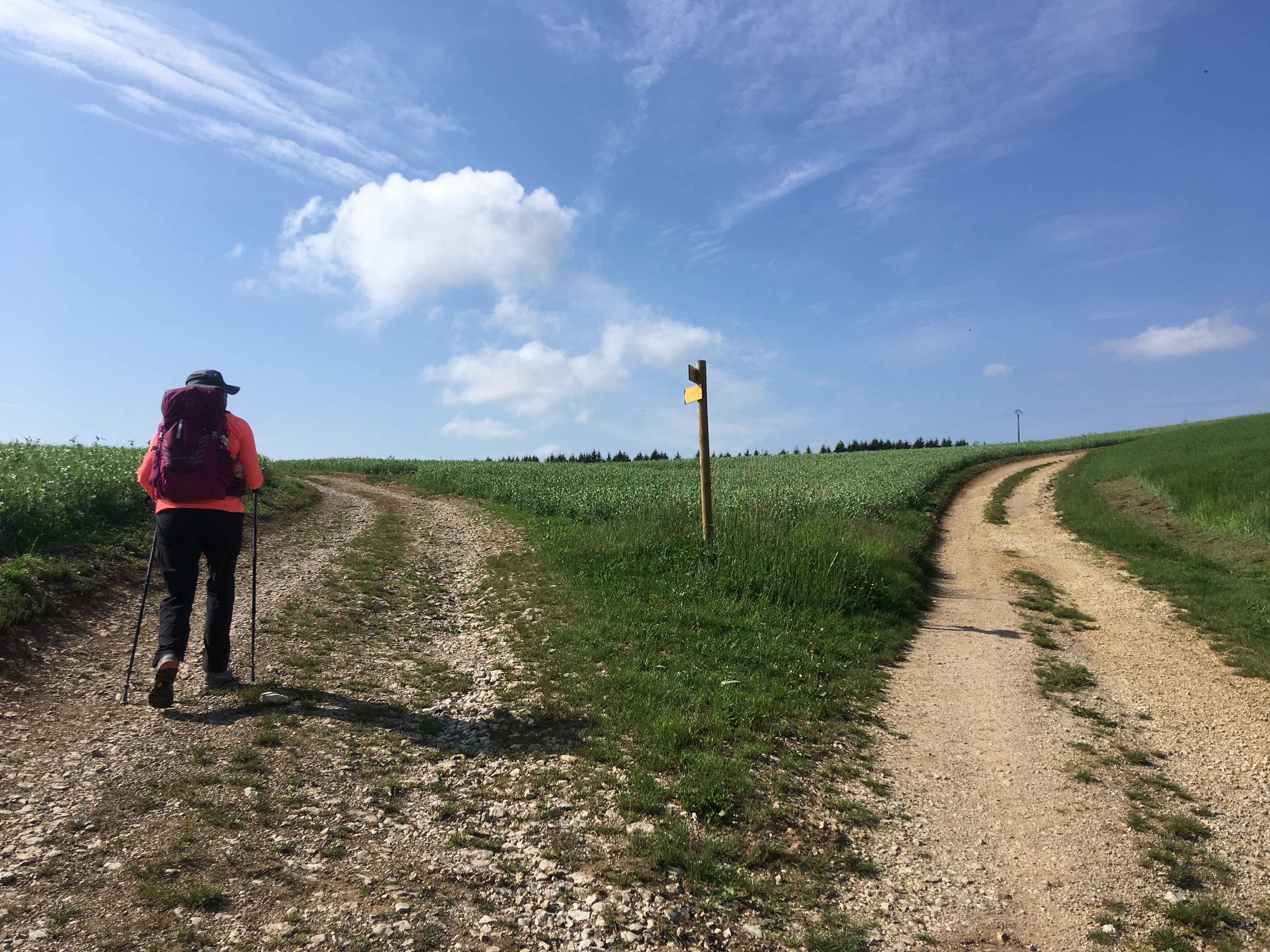A man in a hat called out from the top balcony as he rested his arm on a piece of metal. On the floor below, a young woman looked curiously over the shoulder of a seated woman as a man held tightly onto some object behind them, next window along sat a cat, while a bottom floor window held strange objects and the other – who could tell?
It was one of the best trompe l’oueil we have seen, standing a little off the street, busier than any other building or shop. Maybe one of ‘those’ occupants could direct us to Hotel Le Pomme D’Or, as the Pentecost holiday means the town is nearly deserted.
A young man signed us in and showed us 2 rooms: the painted one for Eu53, or the unpainted one for Eu48. I wanted a good view, same as Corrie, and good light.
We took the painted one with 2 double beds and were told to sleep only in one, which was our clear intention on booking. A three door wall, ceiling to floor, was at the end of our 2 beds, looking like an incomplete trompe l’oueil. Three cupboards perhaps, but only one was. Behind another cupboard door was the loo, and the other, a sink and shower. The water motor had been sabotaged by workmen; time to have a cup of tea as the shower needed a 10 minute warm up period, while the toilet seat only knew how to shut.
An English couple was at breakfast and journeys were shared. He had an Indian background while hers was of Italian heritage. They showed interest in our walk as they prepare to do a smaller camino walk in Portugal next year. I gave him my blog address and
he hopes to have a read on his way to an Italian wedding in Turin.
Across a wide river bridge, the water lapping directly onto houses, as in Venice, just below the doors. A steep hill took us out of town – a ‘Swiss hill’ (nearly falling backwards hill) challenged us all the way to its wide valley view, yet another divided the grape vines, whilst a medley of 5, roller-coastered us through another huge chatty forest. Then it was a long gradual undulating descent to town past a vast twelfth century ‘abbaye’ complex built by St Bernard, which Napoleon converted into a nineteenth century prison. Still a prison today, but parts of the ‘abbaye’ have been surrendered, restored and can be visited. We’re not staying there, but in another St Bernard home just along the street … like the prisoners we don’t have to pay for our room, but we will.




